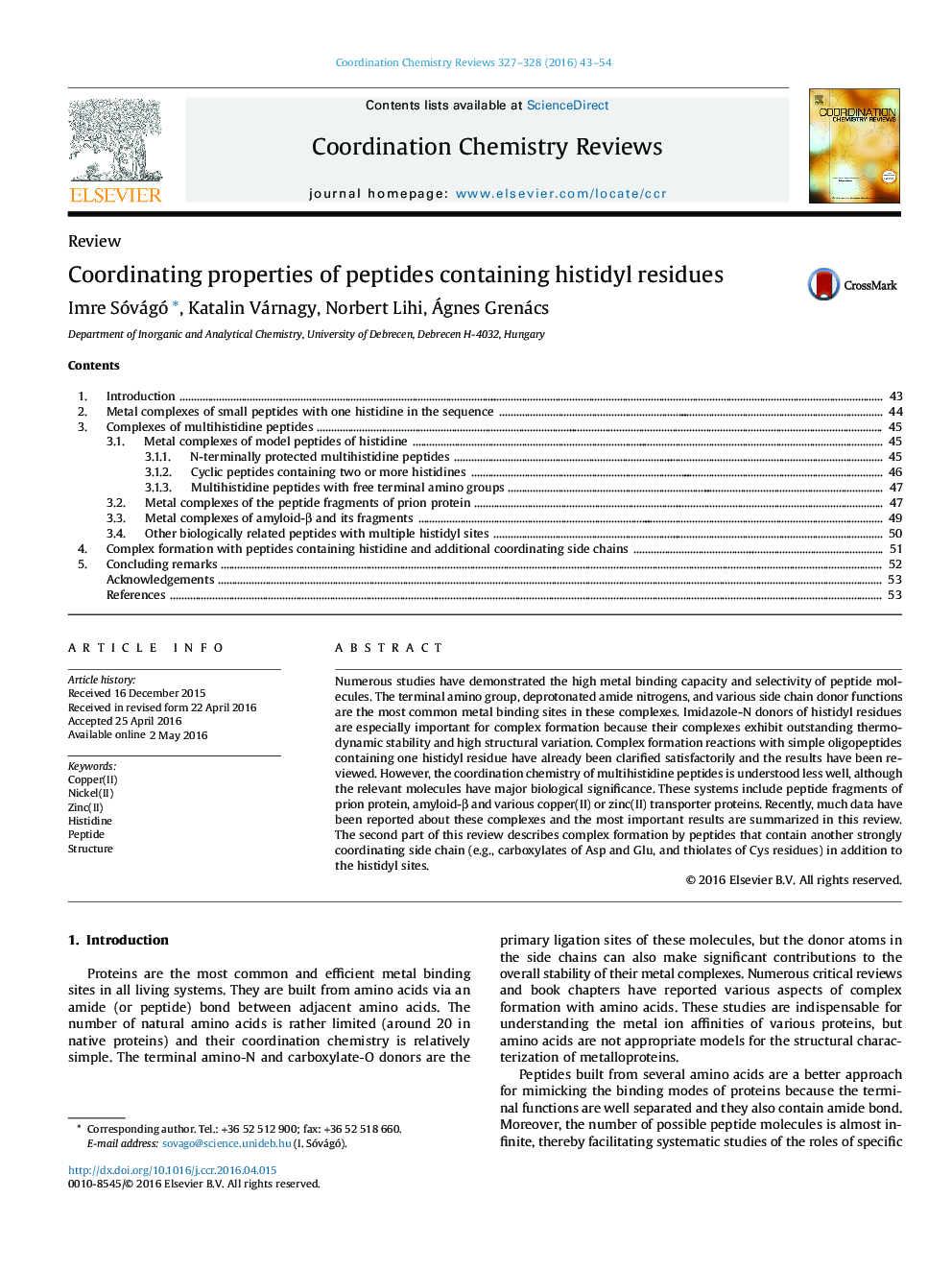| Article ID | Journal | Published Year | Pages | File Type |
|---|---|---|---|---|
| 5150864 | Coordination Chemistry Reviews | 2016 | 12 Pages |
Abstract
Numerous studies have demonstrated the high metal binding capacity and selectivity of peptide molecules. The terminal amino group, deprotonated amide nitrogens, and various side chain donor functions are the most common metal binding sites in these complexes. Imidazole-N donors of histidyl residues are especially important for complex formation because their complexes exhibit outstanding thermodynamic stability and high structural variation. Complex formation reactions with simple oligopeptides containing one histidyl residue have already been clarified satisfactorily and the results have been reviewed. However, the coordination chemistry of multihistidine peptides is understood less well, although the relevant molecules have major biological significance. These systems include peptide fragments of prion protein, amyloid-β and various copper(II) or zinc(II) transporter proteins. Recently, much data have been reported about these complexes and the most important results are summarized in this review. The second part of this review describes complex formation by peptides that contain another strongly coordinating side chain (e.g., carboxylates of Asp and Glu, and thiolates of Cys residues) in addition to the histidyl sites.
Related Topics
Physical Sciences and Engineering
Chemistry
Inorganic Chemistry
Authors
Imre Sóvágó, Katalin Várnagy, Norbert Lihi, Ágnes Grenács,
